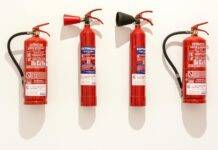
Excavation Safety Quiz Multiple Choice Questions and Answers
Introduction
Excavation work is a crucial aspect of various construction and infrastructure projects. It involves digging, trenching, and earthmoving activities that are fundamental to building foundations, pipelines, and roadways. However, working in and around excavations can be hazardous if proper safety measures are not followed. To ensure the safety of workers and prevent accidents, it is essential to have a comprehensive understanding of excavation safety protocols. One effective way to enhance awareness and knowledge in this area is through an Excavation Safety Quiz.
What is Excavation Safety?
Excavation safety refers to the set of precautions and guidelines designed to protect workers and the surrounding environment during excavation activities. The primary objective is to minimize the risk of accidents, such as cave-ins, collapses, and contact with underground utilities. Safety measures include proper soil analysis, shoring, sloping, and shielding to maintain the stability of excavated areas.
Understanding Excavation Hazards
Common Hazards
Excavation sites present several potential hazards, including:
- Soil Instability: Unstable soil can lead to trench collapses, endangering workers inside.
- Contact with Utilities: Accidental contact with underground utilities, such as gas and power lines, can result in severe injuries or even fatalities.
- Heavy Machinery: Operating heavy machinery in and around excavations requires caution and expertise.
Safety Precautions
To mitigate these hazards, adherence to safety precautions is vital:
- Workers must wear appropriate personal protective equipment (PPE) like hard hats, high-visibility vests, and steel-toed boots.
- Regular inspections of trenches and excavations should be conducted by competent supervisors.
- A thorough analysis of soil conditions is essential before excavation begins.
Multiple Choice Questions on Excavation Safety Quiz
- What is the primary purpose of excavation safety measures?
- a) To slow down construction processes
- b) To save costs on safety equipment
- c) To prevent accidents and protect workers
- d) To make the site look more organized
- Answer: c) To prevent accidents and protect workers
- Which of the following is a common hazard in excavations?
- a) Excessive sunlight exposure
- b) Low noise levels
- c) Soil stability issues
- d) Lack of coffee breaks
- Answer: c) Soil stability issues
- Why is it essential to locate underground utilities before excavation?
- a) To avoid damaging the equipment
- b) To save time during the excavation process
- c) To reduce noise pollution
- d) To prevent accidental contact and potential hazards
- Answer: d) To prevent accidental contact and potential hazards
- What is the recommended type of footwear for excavation workers?
- a) Sandals
- b) Sneakers
- c) Steel-toed boots
- d) Flip-flops
- Answer: c) Steel-toed boots
- What does the “1.5 to 1 rule” in excavation mean?
- a) Excavations should not be more than 1.5 feet deep
- b) The width of an excavation should be 1.5 times its depth
- c) For every 1 foot depth, the excavation should be 1.5 feet wide
- d) Shoring is not required up to a depth of 1.5 feet
- Answer: c) For every 1 foot depth, the excavation should be 1.5 feet wide
- Who is responsible for ensuring that workers are trained in excavation safety?
- a) Workers themselves
- b) Local authorities
- c) The project owner
- d) The employer or contractor
- Answer: d) The employer or contractor
- Which of the following should be done before entering an excavation site?
- a) Notify the media about the project
- b) Conduct a site inspection for potential hazards
- c) Ensure there are enough refreshments available
- d) Call a team meeting to discuss personal matters
- Answer: b) Conduct a site inspection for potential hazards
- Why is it crucial to have an emergency action plan during excavation work?
- a) To avoid overtime expenses
- b) To handle worker grievances
- c) To respond promptly to accidents or injuries
- d) To increase productivity
- Answer: c) To respond promptly to accidents or injuries
- What type of headgear is recommended for workers during excavation?
- a) Baseball caps
- b) Hard hats
- c) Cowboy hats
- d) Sun visors
- Answer: b) Hard hats
- Who should approve the shoring design for deep excavations?
- a) The workers on-site
- b) A professional engineer
- c) The project owner’s family member
- d) A random passerby
- Answer: b) A professional engineer
- What is the purpose of using shoring in excavations?
- a) To provide workers with rest areas
- b) To prevent unauthorized access to the site
- c) To support the excavation walls and prevent cave-ins
- d) To create barriers for noise reduction
- Answer: c) To support the excavation walls and prevent cave-ins
- Why should excavation equipment operators have clear visibility and communication with ground workers?
- a) To maintain a friendly working environment
- b) To coordinate lunch breaks effectively
- c) To avoid misunderstandings and potential accidents
- d) To plan company outings efficiently
- Answer: c) To avoid misunderstandings and potential accidents
- Which organization sets regulations and guidelines for excavation safety in the United States?
- a) International Safety Organization (ISO)
- b) Occupational Safety and Health Administration (OSHA)
- c) Federal Excavation Safety Committee (FESC)
- d) National Excavation Regulations Agency (NERA)
- Answer: b) Occupational Safety and Health Administration (OSHA)
- What precaution should be taken if an excavation site is located near a busy road or pedestrian area?
- a) Install additional lighting for better visibility
- b) Limit the working hours to non-peak traffic times
- c) Put up barricades and warning signs to protect the public
- d) Hire traffic wardens to control the traffic flow
- Answer: c) Put up barricades and warning signs to protect the public
- What is the “Call Before You Dig” service, and why is it essential for excavation safety?
- a) It is a service that provides excavation equipment on rent.
- b) It is a hotline to report emergencies during excavation.
- c) It is a service that locates underground utilities before excavation begins.
- d) It is a program to encourage workers to take breaks during hot weather.
- Answer: c) It is a service that locates underground utilities before excavation begins.
- What should workers do if they notice signs of soil instability during excavation?
- a) Continue working and monitor the situation closely
- b) Inform their supervisor and other workers nearby
- c) Ignore it unless it poses an immediate threat
- d) Take a break and wait for the situation to resolve on its own
- Answer: b) Inform their supervisor and other workers nearby
- What does the term “bench” refer to in excavation terminology?
- a) A place to sit and rest during work hours
- b) A step-like formation in the excavation wall
- c) A designated area for lunch breaks
- d) A platform for heavy equipment storage
- Answer: b) A step-like formation in the excavation wall
- Why should workers be cautious about the weather conditions during excavation work?
- a) To plan outdoor picnics during work breaks
- b) To avoid muddy conditions at the site
- c) To prevent heatstroke and dehydration in hot weather
- d) To enjoy the beautiful scenery around the excavation site
- Answer: c) To prevent heatstroke and dehydration in hot weather
- What should workers do before operating heavy machinery at an excavation site?
- a) Check their social media accounts for updates
- b) Confirm their lunch preferences with the supervisor
- c) Undergo proper training and obtain necessary certifications
- d) Listen to their favorite songs for motivation
- Answer: c) Undergo proper training and obtain necessary certifications
- Why should excavation work be temporarily suspended during heavy rainfall or storms?
- a) To allow workers to take a day off and relax
- b) To prevent excavation equipment from getting damaged
- c) To ensure worker safety and prevent accidents
- d) To enjoy the refreshing rain while at work
- Answer: c) To ensure worker safety and prevent accidents
Remember, a well-informed workforce is a safer workforce. Regular training, adherence to safety protocols, and using the right safety equipment are essential for promoting excavation safety.

























Really it is useful to us sir thank you for this and also please provide pdf format
Thank you & will try
Thank you too!
Really it is useful to us sir thank you for this
Thanks to you
Thank you too!
Thank you for useful information 🙂
Your most welcome
Thank you too!
sir, very useful to everyone which is related to this field thanks a lot for awerness about safety
sir, ihave learn more about safety from youtube HSE GUIDE Channel thanks sir,
Thank you for your love and support.
Thank you too!